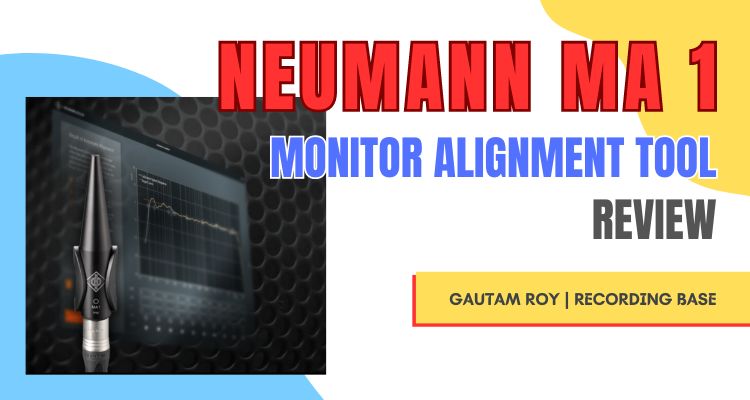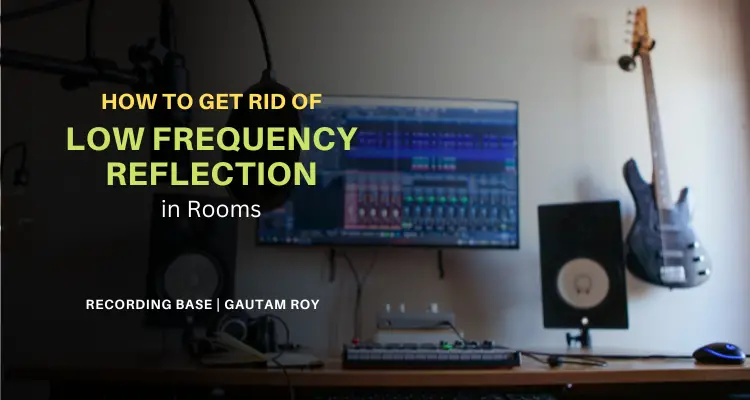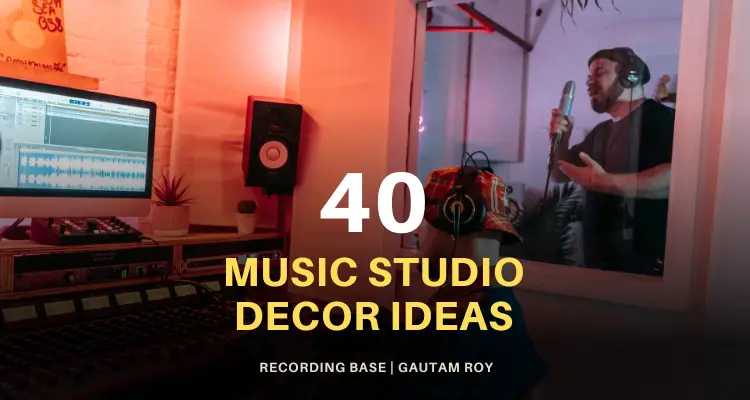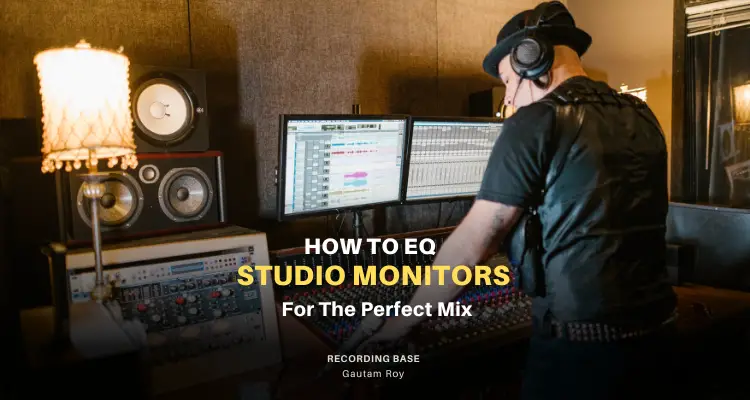If you’re an audio enthusiast, you know that an audio interface is a must-have piece of equipment for recording.
But do you know how does an audio interface works?
In this blog post, I’ll explain the basics of how an audio interface works and what it does.
I’ll also discuss some of the different features to look for when shopping for one. So whether you’re a beginner or a pro, read on to learn more about audio interfaces!
You should also read,
- How to Connect USB 2.0 Audio Interface to MacBook Pro [My Story]
- How to Setup a Music Streaming Studio at Home in 2024
First thing first,
Table of Contents
- 1 What is an audio interface?
- 2 How does an audio interface work?
- 3 When and why do you need an audio interface?
- 4 Difference between integrated sound cards and audio interface
- 5 Types of audio interfaces
- 6 Audio interface Ins/Outs Configuration
- 7 Audio interface connectivity options
- 8 How to choose the right audio interface
- 9 Audio interface technical specifications
- 10 Do you really need an audio interface?
- 11 How much does an audio interface cost?
- 12 Wrapping Up
What is an audio interface?
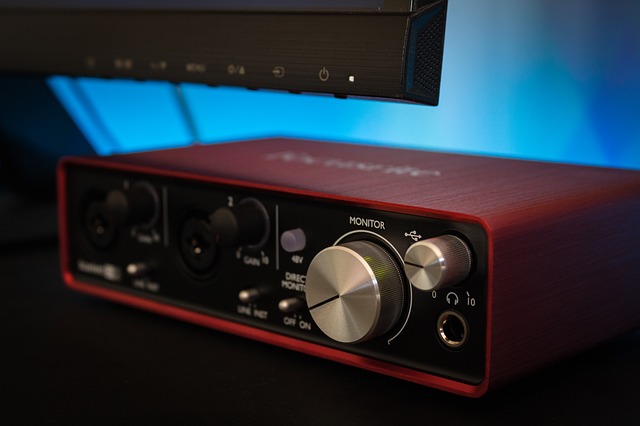
An audio interface is a “combination of input and output devices” which is used to connect music instruments and audio gear such as microphones to computers.
This device converts the analog signals coming from mics and other instruments to computer-readable digital audio files.
Disclosure: This post may contain affiliate links, which means we may receive a commission if you click a link and purchase something that we recommended. Read more about Affiliate disclosure here.
Then the computer is able to process this information and output the final audio file into analog audio which can be heard through speakers and headphones.
There are multiple types of connections used to connect an audio interface to a computer.
Common connectivity options are,
- PCI/PCIe
- USB
- Firewire
- And the latest one, Thunderbolt
Along with ADA converters, audio interfaces commonly have mic preamps to connect mics and convert weak signals into line-level signals.
Another common connectivity found in audio interfaces is MIDI which captures the digital form of music notes and processes the same to analog signals.
How does an audio interface work?
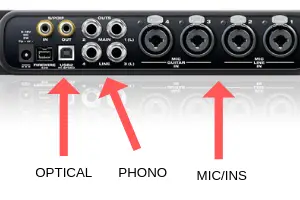
As you have read above, audio interfaces are used in multiple important functions related to audio processing, but their main work is to convert the analog audio to digital audio, process it, and then convert again the digital file to analog audio and send it to speakers or headphones.
If we look back to 70s, 80s, and 90s, audio recording was done with analog devices such as mixing desks, analog amplifiers, tape recorders, etc.
The recorded media was stored in magnetic tapes and then there were loopers available to create replicas of the master copy. that war really time-consuming and sophisticated task.
Also, the recording equipment and loopers were out of reach of normal people because of their high price.
But, nowadays, computer and audio interfaces make audio recording possible even if you are traveling out of your home or sitting in a park.
An audio interface is a multipurpose audio device that has an ADA converter circuit along with mic preamps, MIDI inputs and outputs, line-level inputs, speaker and headphone outs, etc.
This makes it possible to record audio signals coming from guitars, microphones, MIDI keyboards, and other musical instruments, convert them into digital files, and save them into a computer hard disk.
It also allows you to manipulate the audio signals with effects. It works like a bridge between your musical instruments, DAW, and speakers.
When and why do you need an audio interface?
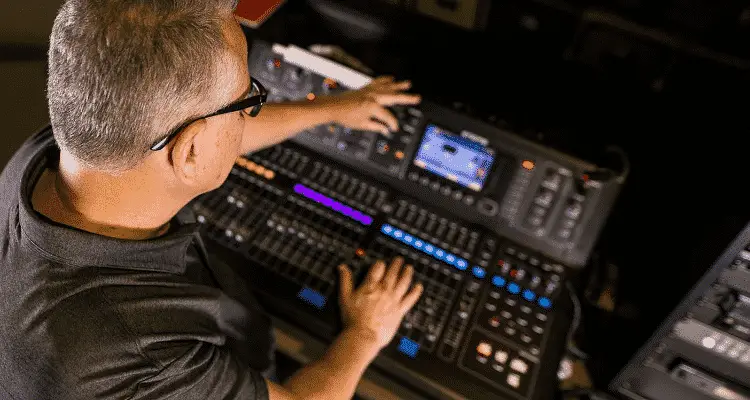
Audio interfaces are used for professional audio recording. It allows you to record microphones and musical instruments and mix the audio tracks to create songs, speeches, movie scoring, etc.
So, when it comes to digital audio recording through a computer, you need an audio interface.
It allows you to record your projects on your computer.
You just need a DAW, a computer, which should be fast enough to tackle audio files, and an audio interface to build a small studio in your home.
However, you do also need microphones, studio monitors, and other audio recording gear to start a small home recording studio.
BUT, this is the minimalist setup that enables you to at least process audio files in your DAW.
So, you might have a question in your mind if we have inbuilt sound cards in computers then why would we need a dedicated audio interface?
The next section will answer that question.
Difference between integrated sound cards and audio interface
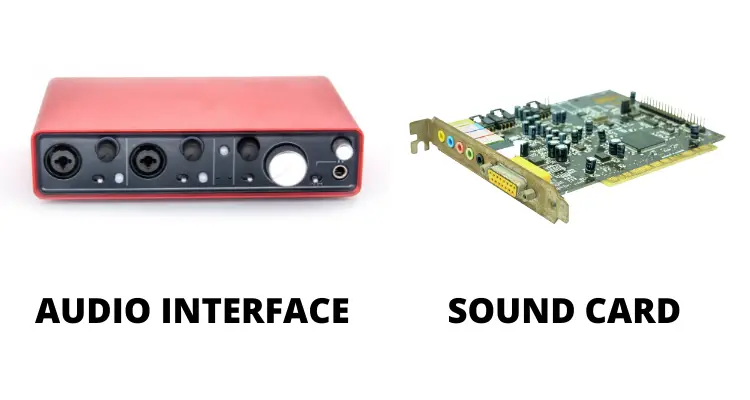
The basic difference between computer-integrated sound cards and a dedicated audio interface is sound cards have limited capabilities regarding AUDIO RECORDING, but they are good enough to listen to audio files.
Even, a typical user will always vote for an integrated sound card as it sounds better than an audio interface.
Surprised?
Well, an integrated audio interface is built to add color to the original sound which manipulates the original sound frequency, whereas a dedicated audio interface is built to deliver a flat frequency response.
This arrangement made the signal dry compared to an integrated sound card.
Hence a typical user votes for it.
Another big difference between both of them is that the integrated sound card has limited connectivity options.
Even, only one mic input catches noise along with sound. There is no noise-canceling technology used in the integrated sound cards.
So, it is not ideal for good-quality audio recording.
Additionally, integrated sound cards have excessive latency and jitter which makes it nearly impossible to record a song in tempo.
That’s why you need a professional audio interface for audio recording and production-quality audio monitoring.
Types of audio interfaces
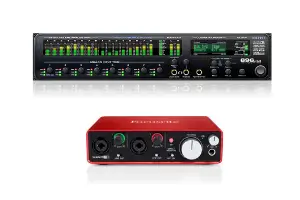
There are multiple types of audio interfaces available in the market. However, if we see them as per functionality then there are two broad categories.
- Small audio interfaces
- Professional audio interfaces
Small audio interfaces are generally 2-4 channel audio interfaces that allow you to record up to 4 mono tracks at a time.
They have low-grade ADA converters. They don’t have high-definition audio recordings above 92kHz. However, they are ideal for outdoor or individual activities such as field recording or bedroom music production.
Also, you don’t need a separate power source to power up these audio interfaces. They are bus-powered which allows you to use them with your laptop.
Professional audio interfaces are big audio interfaces that have ABOVE 4 mono inputs including optical inputs and outputs, MIDI, SPDIF connections, etc.
They have high-grade ADA converters that allow you to record highly professional audio.
Obviously, there is a big price difference between both of them.
Audio interface Ins/Outs Configuration

When it comes to inputs and outputs in the audio interface, there are multiple options available in the market.
You should choose one according to your recording needs.
Ask yourself some questions, like.
- How many instruments do you need to record simultaneously?
- How many outputs do you need to connect your monitors and headphones?
- Think about whether your instrument output ports are compatible with the audio interface’s input ports.
Well, let me point out the common inputs and outputs to make it easy to understand.
- XLR inputs – Used for mics
- XLR/TRS combo inputs – Used for mics as well as line-level instruments
- Optical inputs – Used to connect digital mixers
- MIDI – It is used to play MIDI keyboards with your DAW
- Balanced Mono TRS outputs – Used to connect studio monitors and external amplifiers
- Stereo TRS out – Used to connect a headphone
Along with these common inputs and outputs, there are some others such as SPDIF, Wordclock, etc. But for a beginner understanding the above inputs and outputs is sufficient.
Audio interface connectivity options
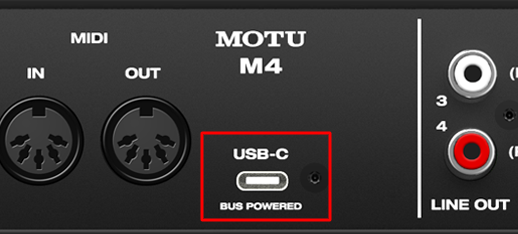
Along with inputs and outputs, you should also check the audio interface connectivity options with the computer.
Common connectivity options are,
- USB 2.0
- USB 3.0
- USB-C
- Firewire
- PCI/PCIe
- Thunderbolt
The speed and efficiency of data transfer are directly dependent on the connectivity option your audio interface has.
Above I have listed down the connectivity options according to the speed (from low to high). Obviously, the highest connectivity charges high prices.
Well, when choosing your audio interface, you should first see what connectivity options your computer or laptop has and then choose the interface keeping in mind your budget.
For a small home studio, USB 2.0 or USB 3.0 audio interfaces are sufficient. But if you want to record multiple instruments at a time then you should choose a fast connection.
How to choose the right audio interface
Choosing the right audio interface is not easy. You should take care of its specifications, connectivity options, compatibility, INs/Outs, DAC converter quality, and more.
Well, the basic criteria are to choose one which has sufficient ins and outs, low latency, and is able to record HD-quality audio.
Want to go deep??
Let me point out the factors you need to choose the right audio interface for you.
- Sample rate and bit depth – Audio sample rate and bit depth impact the audio quality. The more sample rate and bit depth you record the better audio quality you will get. The lowest is 44kHz/16bit and the highest is 192kHz/24bit. I recommend 96kHz/24bit which is sufficient for home studios.
- Ins/Outs – Have you listed down how many of them you need? Now you can evaluate the audio interface as per the ins/outs requirement.
- Connectivity – Always go with the highest possible connectivity option. However, this costs you more than your budget. But choose at least USB 2.0 or USB 3.0.
- Specifications – Look at important specifications such as latency, jitter, etc, and make sure to choose one that has the lowest jitter and latency.
- DAC converter quality – Search for the DAC converter used to manufacture the audio interface. However, it’s not easily available on the manufacturer’s site or other resources. You can head over to the forums to get some more information about it.
Audio interface technical specifications
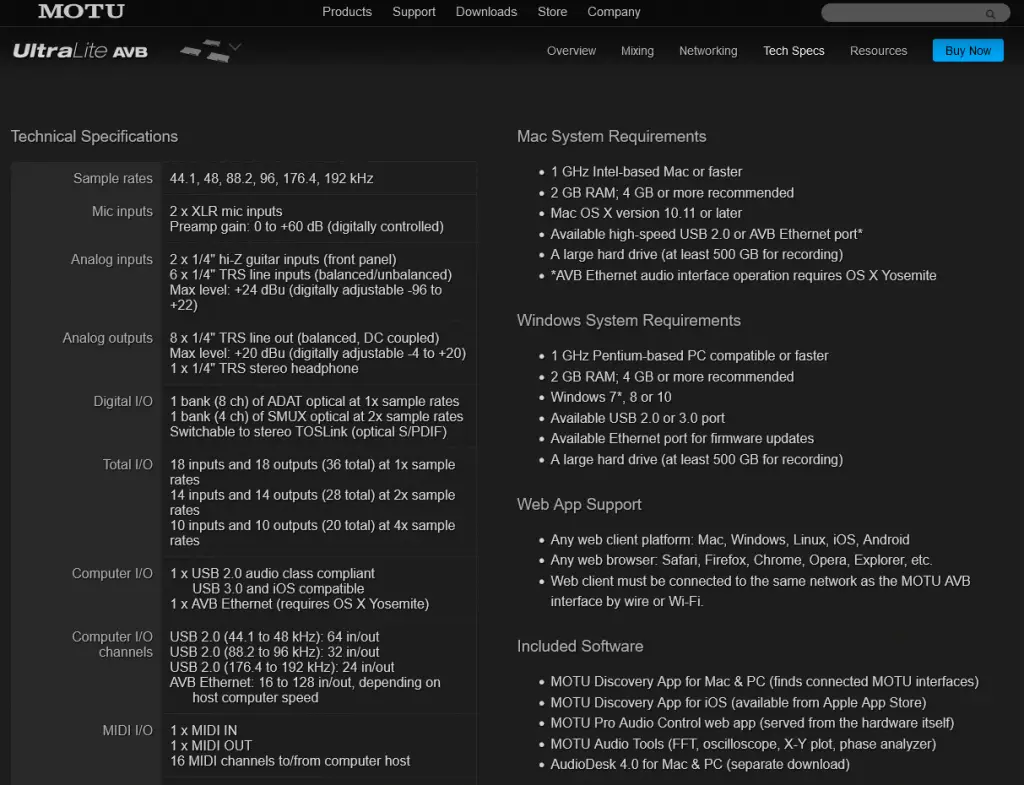
So, how to read and understand the technical specifications?
When you look into the specification table of an audio interface you will be confused, if you don’t know the simple terms of these.
Well, the first thing you should see in the specifications is the highest possible sample rate and bit depth. The highest sample rate is 192kHz which is used in Hollywood studios. However, I use 92kHz which is sufficient for broadcast-quality music production.
The second specification you should see is bit depth. There are three types of bit depth 16bit, 24bit, and 32-bit (floating).
I and most of the music producers record in 24bit.
Some other specifications are latency and jitter. You should choose low latency and jitter audio interfaces.
One important specification you should always see is the SNR which translates Signal to Noise Ratio. You should choose a high signal-to-noise ratio audio interface that ensures to not record more noise in your projects.
Do you really need an audio interface?
Now you know the advantages of an audio interface over an integrated sound card. So, you could ask, “Do I really need an audio interface?”.
Well, if you are a music enthusiast and just listen to music then it’s okay for you to be with an integrated sound card. BUT, if you want to produce serious music then you need a dedicated audio interface.
You need clean inputs and outputs. You need low latency. You need a good DAC converter.
That’s why you need an audio interface.
How much does an audio interface cost?
Hundreds of audio interfaces are out there in the market ranging from a few dollars to thousands of dollars.
a single-channel audio interface may cost you below $100, while if you want a multiple-channel audio interface with other professional features then you have to spend hundreds of dollars.
For a home studio, anywhere from 2-channel to 16-channel audio interface is ideal.
Again it depends on your recording needs.
However, if you want good quality then at least go with the above $100 interface.
Wrapping Up
The world of the audio interface is really stuffed with hundreds of models from several brands. Choosing one that suits your needs is not easy.
However, reviews and other guides on the internet can help you with that. Such as my article, “How To Choose Audio Interfaces in 2024 [Ultimate Guide]” covers all the aspects of choosing an ideal audio interface.
Don’t forget to share the brand and model of your audio interface in the comments. Let others know which ones are better and choose from them.
You might also like,

